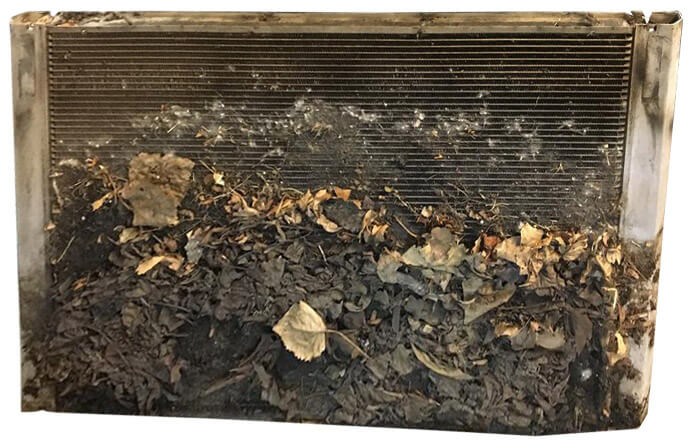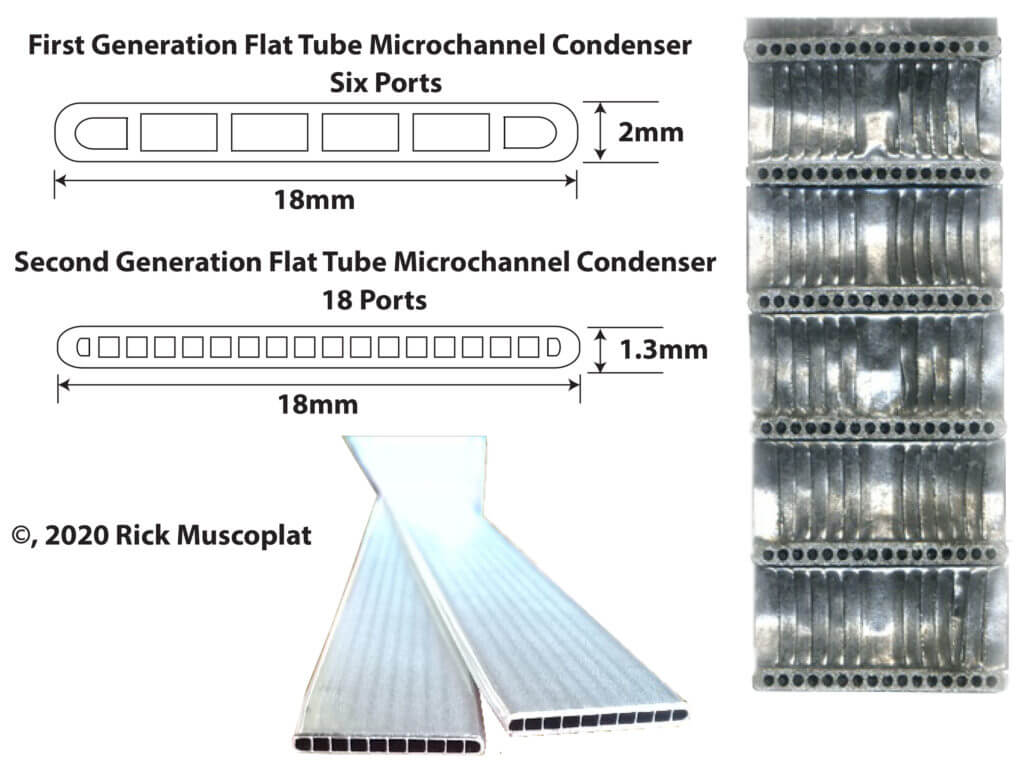Test For A Clogged AC condenser — Step by step guide
How to test for a clogged AC condenser
A restricted or clogged AC condenser can cause high pressures and compressor shut down, along with no cooling. A condenser can be restricted internally or externally. Here are the steps to test for a clogged AC condenser
Check the fins on the front of the AC condenser
Pop the hood and use a flashlight to check for debris on the front of the AC condenser. If you find debris, spray it with household cleaner and then hose it down. Do NOT use a high pressure washer on an AC condenser; it can damage the cooling fins.
Perform a visual inspection of the condenser fins
Leaves, bugs, dirt, dust and clog the fins on the condenser and dramatically reduce its ability to remove heat from the refrigerant. Clogged fins will reduce AC cooling and cause high pressure.
If you find dirt buildup, spray the fins with a household cleaner. Let it work to soften and loosen the bugs. Then hose it down with a garden hose. Don’t use a pressure washer on the fins; the high pressure can bend the fins, reducing air flow.

Clogged AC condenser. This condenser can’t properly cool the refrigerant
Test for a clogged AC condenser – external inspection and cleaning
With the engine and AC running in MAX mode, feel the temperature of the discharge hose. The discharge hose goes from the AC compressor to the AC condenser. The hose should be very hot.
Next feel the liquid line leaving the condenser; the one that heads up to the firewall. Compare the temps. The temperature should not drop more than 25°F.
If you feel a major temperature change across the condenser, the condenser is obstructed. Due to the use of micro-channels in modern condensers, they can’t be flushed, they must be replaced.

What clogs an AC condenser internally?
As mentioned above, dirt, bugs and road dirt are common causes of reduced AC condenser performance. It’s clogged, but not internally.
Internal restrictions are different. They’re caused by two things; disintegration of rubber hoses, metallic particles from compressor wear, or seal wear, OR sludge. Sludge forms when air and moisture get into the system due to a leak and the air and water mixes with the refrigerant oil. Any time you mix water with any oil and expose it to air, you get an oxidized emulsion. But in an AC system, air and water also forms acids. So the gooey mess clogs the micro passages in modern AC condensers, reducing flow and cooling. These condensers can’t be flushed and must be replaced
©, 2022 Rick Muscoplat
Posted on by Rick Muscoplat